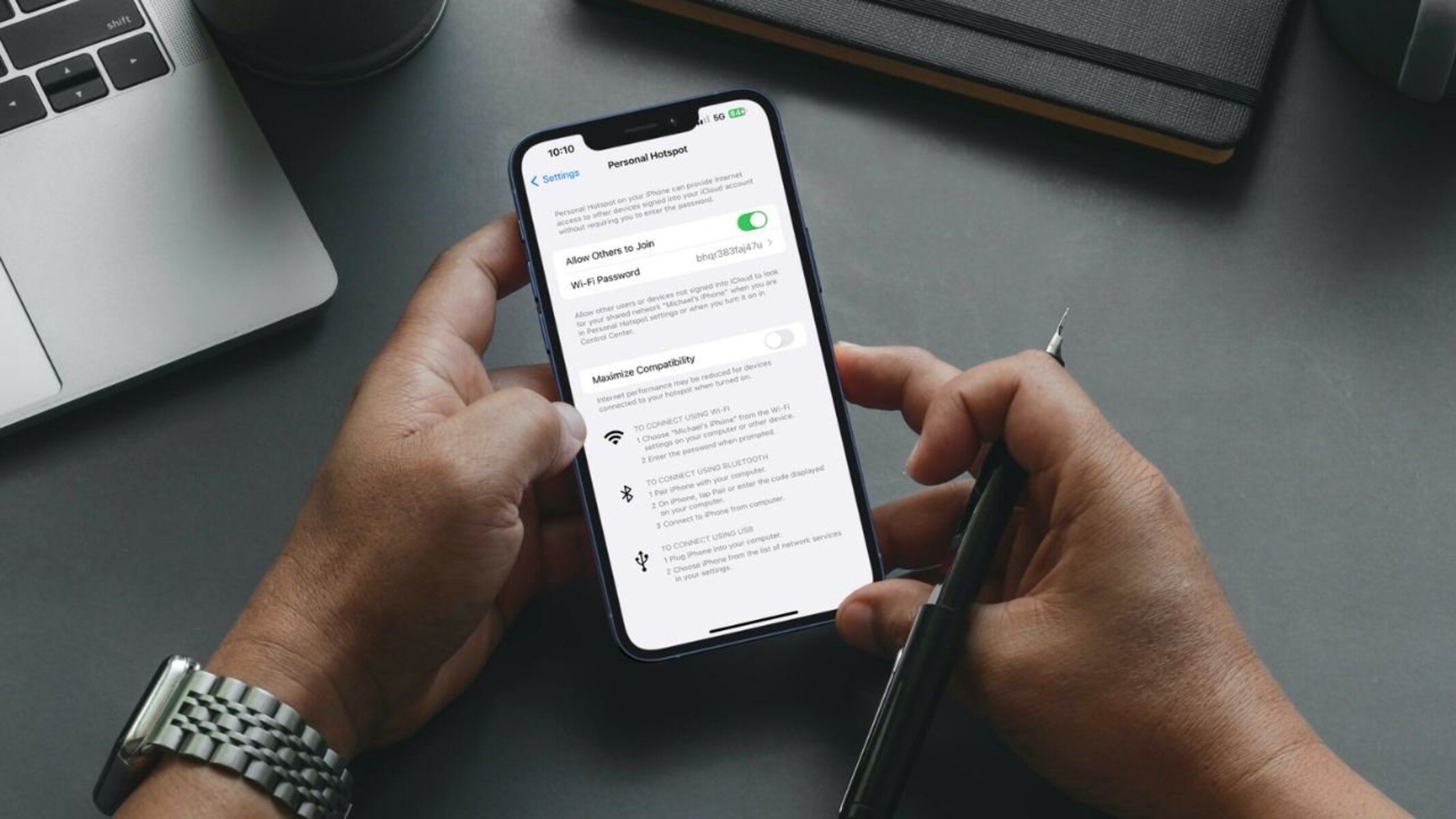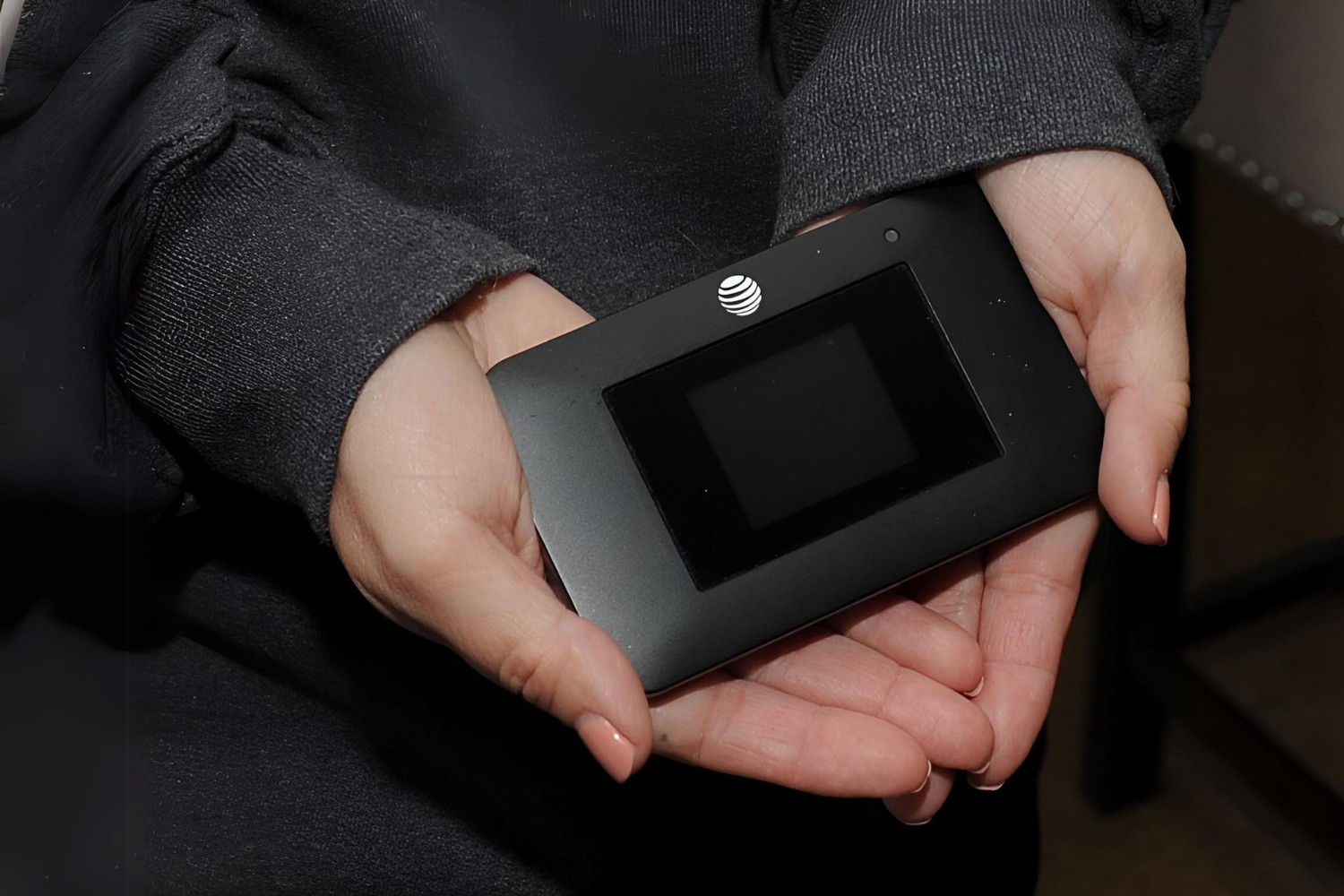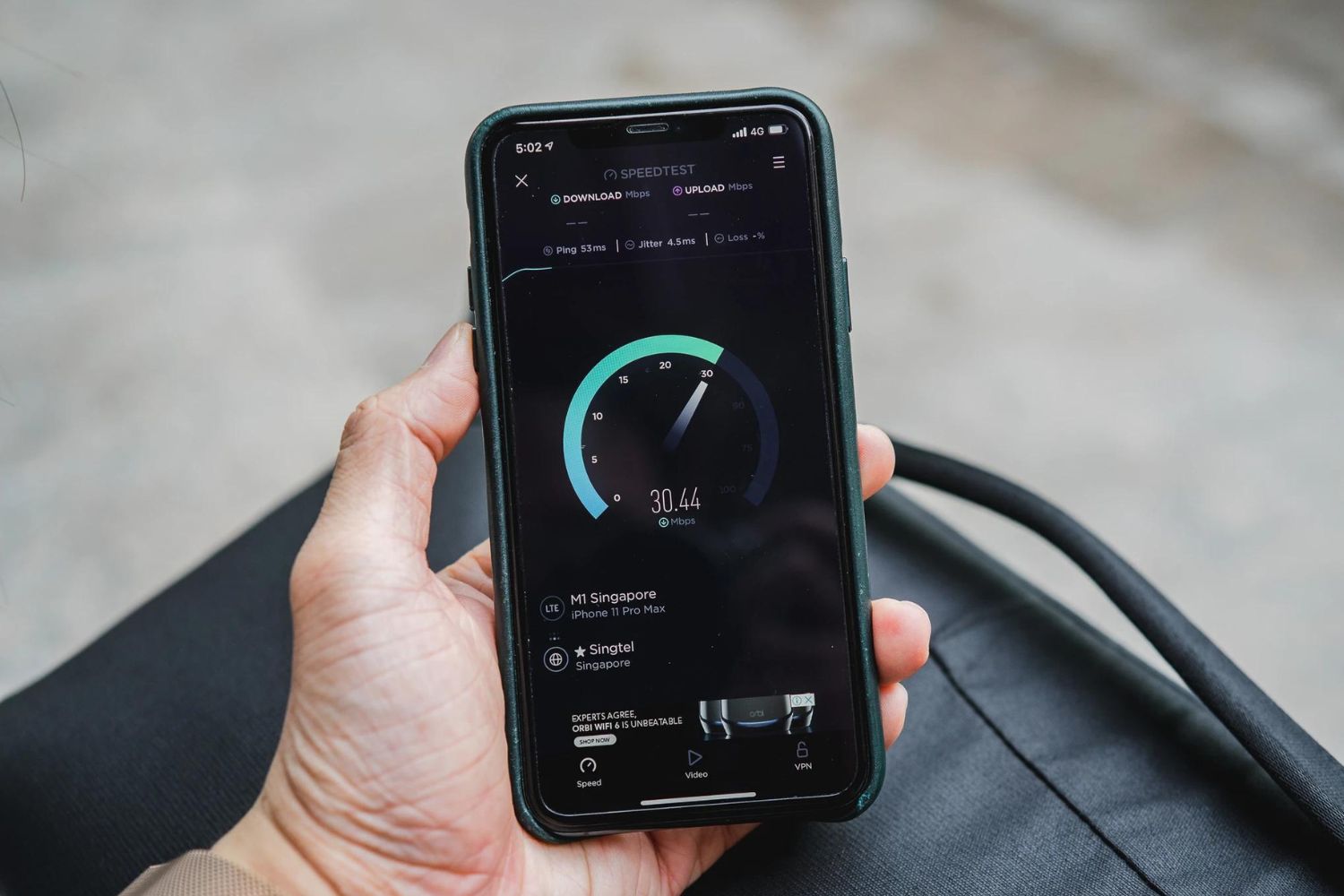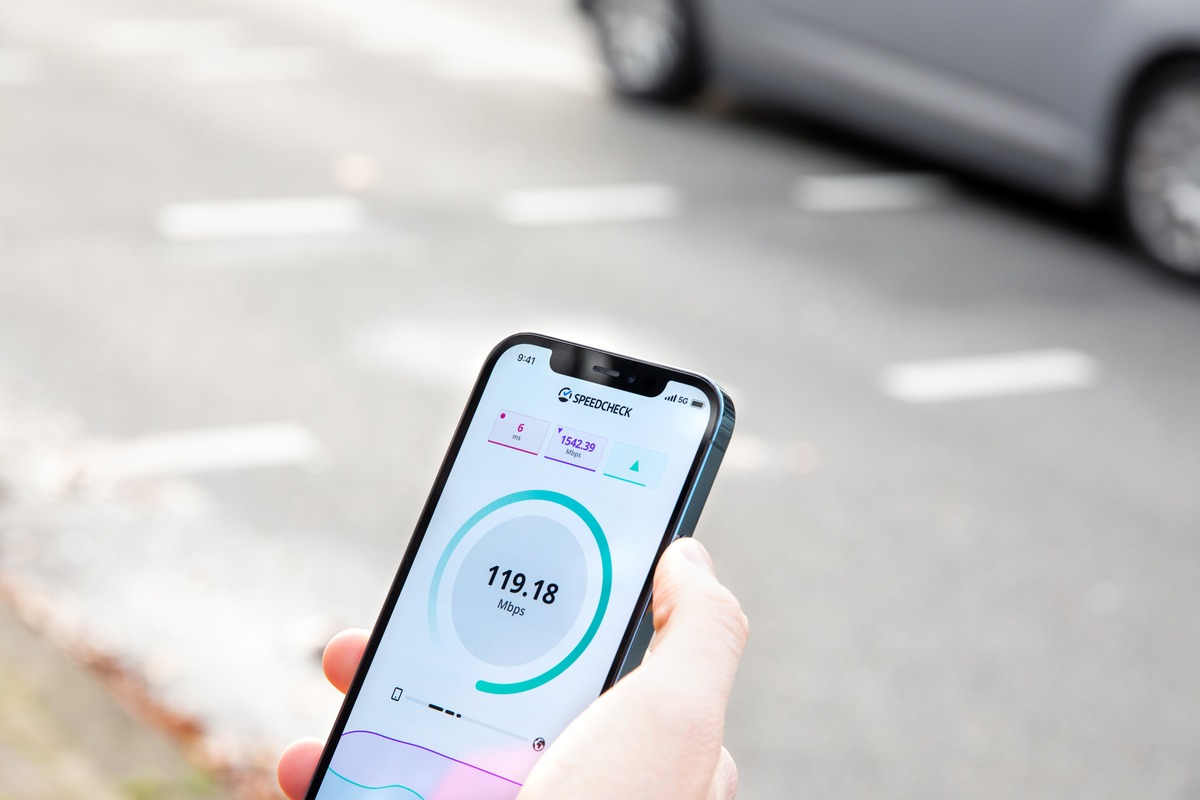Introduction
Setting up a hotspot to access the internet on the go has become increasingly essential in our modern, fast-paced lives. Whether you're a digital nomad, a remote worker, or simply someone who needs to stay connected while away from home, optimizing your hotspot's performance is crucial. In this comprehensive guide, we will delve into the intricacies of setting up and fine-tuning your hotspot to ensure seamless connectivity and optimal performance.
A well-configured hotspot not only provides reliable internet access but also enhances productivity and convenience. By understanding the factors that influence hotspot performance and implementing best practices, you can maximize the efficiency of your mobile internet connection. From selecting the ideal location for your hotspot to managing security settings and troubleshooting common issues, this guide will equip you with the knowledge and strategies to elevate your hotspot experience.
In the following sections, we will explore the key considerations for optimizing your hotspot's performance. By carefully configuring your hotspot and addressing potential challenges, you can enjoy a stable and efficient internet connection wherever you are. Let's embark on this journey to unlock the full potential of your hotspot and ensure that you stay connected without interruptions.
Understanding Hotspot Performance
Hotspots have become indispensable for staying connected on the go, but their performance can vary significantly based on various factors. Understanding the key elements that influence hotspot performance is essential for optimizing your connectivity experience.
Signal Strength
The strength of the cellular signal received by your hotspot device directly impacts its performance. A strong signal ensures faster data speeds and more reliable connectivity. Factors such as distance from cellular towers, obstructions like buildings or natural terrain, and network congestion can all affect signal strength. To maximize performance, positioning your hotspot in an area with strong signal reception is crucial.
Network Technology
The type of network technology supported by your hotspot device also plays a pivotal role in determining performance. Different generations of cellular technology, such as 4G LTE and 5G, offer varying data speeds and latency. Ensuring that your hotspot device is compatible with the latest network technology available in your area can significantly enhance performance.
Device Capabilities
The hardware and software capabilities of your hotspot device directly impact its performance. Modern hotspot devices equipped with advanced antennas and efficient processors can deliver superior performance compared to older models. Additionally, features such as dual-band Wi-Fi support and the ability to connect multiple devices simultaneously contribute to a better user experience.
Data Plan and Throttling
The terms and conditions of your data plan, including any throttling or data deprioritization thresholds, can affect hotspot performance. Some carriers may limit hotspot data speeds after reaching a certain usage threshold, impacting performance until the next billing cycle. Understanding the specifics of your data plan and any potential limitations is essential for managing hotspot performance effectively.
Interference and Congestion
Interference from other electronic devices and network congestion in densely populated areas can degrade hotspot performance. Identifying and mitigating sources of interference, such as microwaves or Bluetooth devices, can help optimize performance. Additionally, choosing less congested Wi-Fi channels and utilizing the 5GHz band when possible can minimize the impact of network congestion.
By comprehending these fundamental aspects of hotspot performance, you can make informed decisions to enhance connectivity and productivity while on the move. The next sections will delve into practical strategies for optimizing hotspot performance, including selecting the ideal location, configuring security settings, managing connected devices, monitoring data usage, and troubleshooting common issues. Let's dive deeper into these essential considerations to elevate your hotspot experience.
Choosing the Right Location
Selecting the optimal location for your hotspot device is a critical step in maximizing its performance and ensuring reliable connectivity. The physical placement of your hotspot can significantly impact signal strength, data speeds, and overall user experience. When choosing the right location for your hotspot, consider the following factors:
Signal Strength and Reception
Position your hotspot in an area with strong cellular signal reception. This may involve identifying locations with minimal obstructions, such as buildings or dense foliage, that could interfere with signal propagation. Additionally, being in proximity to a cellular tower or in an area with good network coverage can bolster signal strength, leading to improved performance.
Environmental Conditions
Take into account environmental factors that could affect signal transmission. For instance, if you're indoors, consider placing the hotspot near a window or in a central location to optimize signal propagation. In outdoor settings, avoid areas with excessive electromagnetic interference or physical barriers that could impede signal reception.
Heat Dissipation
Hotspot devices can generate heat during prolonged use, potentially impacting their performance. Choose a location that allows for adequate heat dissipation to prevent overheating, which can degrade the device's functionality and lead to connectivity issues.
Wi-Fi Coverage
If your hotspot device offers Wi-Fi functionality, ensure that the chosen location provides optimal coverage for the intended usage area. Placing the device strategically can help minimize Wi-Fi dead zones and ensure seamless connectivity for connected devices.
Portability and Flexibility
Consider the portability of your hotspot device when selecting its location. If you frequently move between different locations, opt for a setup that allows for easy relocation without compromising signal strength or network performance.
By carefully assessing these factors, you can identify the most suitable location for your hotspot device. Whether you're working from a remote location, traveling, or simply need reliable internet access on the go, choosing the right location for your hotspot is pivotal in optimizing its performance and ensuring uninterrupted connectivity.
In the next sections, we will explore additional strategies for configuring security settings, managing connected devices, monitoring data usage, and troubleshooting common issues to further enhance your hotspot experience. Let's continue our journey to unlock the full potential of your hotspot and elevate your mobile connectivity.
Configuring Security Settings
Ensuring robust security measures for your hotspot is paramount to safeguarding sensitive data and protecting your connection from unauthorized access. By implementing effective security settings, you can mitigate potential risks and enjoy a secure browsing experience. Here's a detailed overview of key considerations when configuring security settings for your hotspot:
Encryption Protocols
Utilize strong encryption protocols, such as WPA2 (Wi-Fi Protected Access 2) or the more advanced WPA3, to secure your hotspot network. Encryption scrambles data transmitted between devices, preventing unauthorized interception and maintaining the confidentiality of your communications.
Customized Network Name (SSID)
Assign a unique and easily identifiable network name (SSID) for your hotspot. Avoid using default or generic SSIDs, as these can make your network more susceptible to unauthorized access. A distinct SSID enhances network visibility and helps users identify legitimate hotspots.
Strong Password Protection
Set a robust password for your hotspot network to prevent unauthorized users from gaining access. Opt for a complex passphrase comprising a combination of uppercase and lowercase letters, numbers, and special characters. Regularly updating the password further strengthens the security of your network.
MAC Address Filtering
Implement MAC (Media Access Control) address filtering to specify which devices can connect to your hotspot. By configuring a whitelist of approved MAC addresses, you can restrict network access to authorized devices only, adding an extra layer of security.
Guest Network Segregation
If your hotspot supports guest network functionality, consider enabling a segregated guest network. This feature allows you to provide internet access to visitors while isolating them from your primary network, minimizing the risk of unauthorized access to sensitive data.
Firmware and Software Updates
Regularly update the firmware and software of your hotspot device to patch security vulnerabilities and ensure optimal protection against emerging threats. Staying current with updates helps fortify your network's defenses and enhances overall security.
By adhering to these security best practices and diligently configuring your hotspot's security settings, you can create a resilient barrier against potential security breaches and unauthorized access. Prioritizing security not only safeguards your data and privacy but also fosters a worry-free browsing experience, allowing you to harness the full potential of your hotspot with confidence.
In the subsequent sections, we will delve into effective strategies for managing connected devices, monitoring data usage, and troubleshooting common issues, empowering you to optimize your hotspot experience to its fullest potential. Let's continue our exploration of essential hotspot optimization techniques.
Managing Connected Devices
Effectively managing the devices connected to your hotspot is crucial for maintaining network performance, security, and overall user experience. As the number of connected devices increases, it becomes essential to implement strategies to optimize connectivity and ensure seamless operation. Here's a detailed overview of key considerations when managing connected devices on your hotspot:
Device Prioritization
Prioritize critical devices or applications that require consistent and reliable connectivity. Many modern hotspot devices offer the ability to assign priority to specific devices, ensuring that essential tasks, such as video conferencing or remote work activities, receive optimal bandwidth and network resources.
Bandwidth Allocation
Allocate bandwidth intelligently to accommodate the varying needs of connected devices. By managing bandwidth allocation, you can prevent individual devices from monopolizing network resources, thereby maintaining a balanced and fair distribution of available bandwidth.
Connection Limits
Set connection limits to regulate the number of devices that can concurrently connect to your hotspot. This feature helps prevent network congestion and ensures that the available bandwidth is efficiently distributed among connected devices, enhancing overall performance.
Device Monitoring and Management
Utilize the monitoring and management capabilities of your hotspot device to track connected devices, monitor data usage, and identify potential bandwidth-intensive applications. This insight empowers you to make informed decisions regarding network optimization and device management.
Quality of Service (QoS) Settings
Implement Quality of Service (QoS) settings to prioritize specific types of network traffic, such as voice or video calls, over other data-intensive activities. QoS settings enable you to ensure a seamless user experience for critical applications while effectively managing network resources.
By implementing these strategies, you can effectively manage the devices connected to your hotspot, optimize network performance, and enhance the overall user experience. Prioritizing critical tasks, balancing bandwidth allocation, and leveraging device monitoring capabilities are essential steps in maintaining a reliable and efficient hotspot network.
In the subsequent sections, we will explore effective techniques for monitoring data usage, troubleshooting common issues, and further enhancing your hotspot experience. Let's continue our journey to unlock the full potential of your hotspot and ensure seamless connectivity for all connected devices.
Monitoring Data Usage
Monitoring data usage on your hotspot is essential for several reasons, including managing costs, preventing overage charges, and optimizing network performance. By proactively tracking data consumption, you can make informed decisions about usage patterns, identify potential sources of excessive data consumption, and ensure that your hotspot operates efficiently. Here's a comprehensive overview of effective strategies for monitoring data usage:
Real-Time Data Tracking
Leverage the real-time data tracking features provided by your hotspot device or carrier to monitor current data usage. Many hotspot devices offer built-in data tracking capabilities, allowing you to view real-time usage statistics and stay informed about your data consumption as it occurs.
Usage Alerts and Notifications
Take advantage of usage alerts and notifications offered by your hotspot device or mobile carrier. Setting up alerts for predefined data thresholds can help you stay informed about approaching data limits, enabling proactive management of data usage to avoid potential overage charges.
Data Usage Reports
Regularly review detailed data usage reports provided by your hotspot device or carrier. These reports offer insights into historical data consumption patterns, peak usage periods, and the distribution of data across connected devices. Analyzing these reports can reveal trends and patterns that inform data management strategies.
Device-Specific Usage Monitoring
Utilize features that enable device-specific data usage monitoring. Some hotspot devices allow you to track data consumption on a per-device basis, empowering you to identify individual devices or applications that may be consuming disproportionate amounts of data.
Data Management Tools and Apps
Explore third-party data management tools and mobile apps designed to track and manage data usage. These tools often provide additional functionality, such as data compression, background data restriction, and data usage predictions, to help optimize data consumption across connected devices.
By implementing these strategies, you can effectively monitor data usage on your hotspot, gain valuable insights into consumption patterns, and take proactive measures to optimize data utilization. Whether you're managing a limited data plan or aiming to maximize network efficiency, monitoring data usage is a fundamental aspect of maintaining a reliable and cost-effective hotspot connection.
In the subsequent sections, we will delve into effective techniques for troubleshooting common issues and further enhancing your hotspot experience. Let's continue our exploration of essential hotspot optimization strategies.
Troubleshooting Common Issues
Encountering common issues with your hotspot can disrupt your connectivity and hinder productivity. By familiarizing yourself with effective troubleshooting techniques, you can swiftly address these challenges and restore optimal performance. Here's a comprehensive guide to troubleshooting common hotspot issues:
1. Signal Interference and Weak Connectivity
- Solution: If you experience weak signal strength or intermittent connectivity, consider repositioning your hotspot to a location with better reception. Avoid placing the device near electronic appliances or dense structures that may cause signal interference. Additionally, switching to a different Wi-Fi channel or utilizing the 5GHz band can mitigate interference and improve connectivity.
2. Slow Data Speeds
- Solution: Slow data speeds may result from network congestion or limitations within your data plan. To address this, monitor your data usage to ensure you have not exceeded any thresholds that could lead to throttling. If network congestion is the issue, consider using your hotspot during off-peak hours or in less crowded areas to enhance data speeds.
3. Device Connectivity Issues
- Solution: If specific devices encounter difficulty connecting to the hotspot, verify that the device's Wi-Fi settings are correctly configured. Restarting the hotspot device and the affected devices can often resolve connectivity issues. Additionally, updating the firmware of your hotspot device can address compatibility issues with newer devices.
4. Overheating and Performance Degradation
- Solution: Overheating can impact the performance of your hotspot. Ensure that the device is placed in a well-ventilated area to facilitate heat dissipation. If overheating persists, consider reducing the number of connected devices or implementing periodic rest periods for the hotspot to prevent excessive heat buildup.
5. Security Concerns and Unauthorized Access
- Solution: If you suspect unauthorized access to your hotspot, review and strengthen your security settings. Change the Wi-Fi password, enable MAC address filtering, and update the encryption protocols to fortify your network's defenses against unauthorized intrusions.
By applying these troubleshooting strategies, you can effectively address common issues that may arise with your hotspot, ensuring a reliable and seamless connectivity experience. Regularly reviewing and optimizing your hotspot setup in response to these challenges will contribute to a robust and efficient mobile internet connection.
In summary, proactive troubleshooting and maintenance are essential for maximizing the performance and reliability of your hotspot, empowering you to stay connected with confidence and convenience.
Conclusion
In conclusion, optimizing the performance of your hotspot is pivotal in ensuring seamless connectivity and maximizing productivity while on the go. By understanding the factors that influence hotspot performance and implementing best practices, you can elevate your mobile internet experience.
Selecting the right location for your hotspot is foundational to its performance. By considering signal strength, environmental conditions, and portability, you can position your device for optimal connectivity. Configuring robust security settings is equally essential, safeguarding your data and privacy while fostering a worry-free browsing experience.
Effectively managing connected devices on your hotspot is crucial for maintaining network performance and ensuring a seamless user experience. Prioritizing critical tasks, balancing bandwidth allocation, and leveraging device monitoring capabilities are key strategies in achieving this goal. Additionally, monitoring data usage empowers you to make informed decisions about usage patterns, prevent overage charges, and optimize network efficiency.
When troubleshooting common hotspot issues, addressing signal interference, slow data speeds, device connectivity issues, overheating, and security concerns is essential for maintaining a reliable and efficient connection. Proactive troubleshooting and maintenance contribute to a robust and seamless mobile internet experience.
By implementing these strategies and best practices, you can unlock the full potential of your hotspot and ensure that you stay connected without interruptions. Whether you're a remote worker, a frequent traveler, or simply in need of reliable internet access on the go, optimizing your hotspot's performance is fundamental to enhancing your digital lifestyle.
Embracing these optimization techniques empowers you to harness the full potential of your hotspot, enabling you to navigate the digital landscape with confidence, convenience, and efficiency. Stay connected, stay productive, and stay empowered with a finely-tuned hotspot that meets your connectivity needs wherever you go.

























